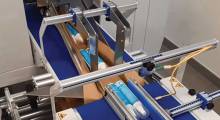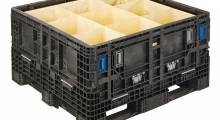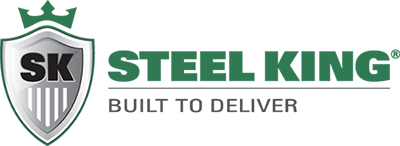Work Platforms have long been used to provide more storage space in warehouses and distribution centers, but now they are playing an increasing role in supporting automation equipment.
Chris Pahls, Product Manager with Steel King’s NexCaliber Structures product division:
“Much of the automation being used these days is equipment that is situated atop a platform, or that hangs from a platform’s underside. So platforms are literally foundational for a lot of automation equipment; you can’t install the automation until the platforms are installed.”
For automation equipment, work platforms provide:
- Flexibility to accommodate a variety of equipment and position it at different locations for distribution center, warehouses, micro-fulfillment centers and retail environments
- Durability to support the weight of heavy equipment and to withstand seismic events
- Smooth and level surfaces for equipment to operate on, especially for Automated Guided Vehicles (AGV) and Autonomous Mobile Robots (AMR)
- Customization and flexibility to support complex conveyance systems
- Safety features to protect workers and the equipment
Space Optimization and Safety
Automated storage and retrieval systems (ASRS), robotic pickers, automated guided vehicles (AGVs), conveyor systems, and bagging machines all can be positioned on an elevated platform – optimizing use of a facility’s cubic footage, enhancing safety by separating equipment from workers, and allowing for more complex, productive material handling solution. “Pretty much anything that can be done on the ground can be done at an elevated level,” Pahls notes.
But for processes to be fully optimized, it’s crucial that platforms be designed properly. Steel King’s NexCaliber Structures works closely with systems integrators to understand the goals of the automated solution, and then creates a 3D model. The 3D process allows customers to visually verify the accuracy of elevations, clearances and other aspects relating to the intended use of the platform and how it integrates within the facility.
Pahls:
“An integrator will come to us with a plan for a facility, and we’ll create a virtual model that shows all aspects of the platform, including railing, stairs, gates and other equipment as part of the design.”
That could be for a single-level platform or one that is multi-level.
The resulting platforms are designed to accommodate sophisticated equipment, such as sortation conveyors, singulator systems, high-speed scales and shuttles. Platforms can be designed not just to support automation equipment, but also to provide safe access to the equipment for maintenance, operations and storage.
3D Model Allows for Quicker Approval Drawings
NexCaliber’s proprietary 3D model integrates flawlessly with customer CAD systems and has standards that allow much quicker creation of approval drawings, while being flexible enough to design a platform system for any need.
Pahls:
“In this industry, it typically takes several weeks to create an approval drawing to kick off the approval process. But we’re able to start the process within a day of receiving a purchase order, because our model already exists from the quoting process. The customer is able to see every view of what their platform will look like, where it’s going, size of the columns, and where they are located. This is a substantial advancement to the approval process by visually avoiding clashes with clients’ equipment and existing structures.”
“Platforms today are much more complex than in the past,” Pahls observes. “And they are often much larger and a much bigger piece of the overall puzzle. Whatever size or how complex, platforms are essential for supporting automation equipment.”
Article topics












